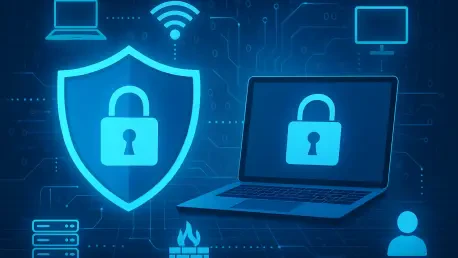As the holiday season approaches, many network administrators eagerly anticipate a well-deserved break to spend quality time with family and friends, stepping away from the constant demands of monitoring systems and managing security protocols. However, this festive period often sees a significant spike in cyber threats, with attackers exploiting reduced oversight and increased online activity. From ransomware to phishing scams, the risks are heightened during extended breaks when networks might be less monitored. Ensuring robust security measures are in place before stepping away is critical to safeguarding sensitive data and maintaining operational integrity. This article explores practical steps and best practices that can help protect networks during the holidays, offering actionable insights to minimize vulnerabilities and ensure peace of mind while enjoying the season.
1. Updating Systems and Minimizing Exposure
Ensuring that network infrastructure is up to date before the holiday break is a fundamental step in mitigating risks. Firmware updates often include critical security patches that address known vulnerabilities, as well as enhancements that strengthen overall system defenses. For instance, administrators should prioritize installing the latest updates for firewalls and other internet-facing systems like VPN concentrators. Beyond updates, taking unnecessary systems offline can significantly reduce the attack surface. Any device or service exposed to the internet, whether directly or through network address translation, poses a potential entry point for attackers. Shutting down non-essential infrastructure during extended breaks eliminates unnecessary risks, ensuring that only critical systems remain active and properly secured against potential threats.
Another key aspect of minimizing exposure involves a thorough review of system accessibility. Administrators should assess which systems truly need to remain operational during the holidays and disable access to others. This includes evaluating networked applications, IoT devices, and administrative portals that may not require constant uptime. Reducing the number of active endpoints limits opportunities for cybercriminals to exploit weaknesses. Additionally, for systems that must stay online, applying the latest security configurations and hardening measures can further bolster defenses. The goal is to create a lean, secure environment where only essential services are active, each protected by the most current updates and settings to withstand potential attacks during periods of reduced monitoring.
2. Strengthening Authentication Measures
One of the most effective ways to protect network access during the holidays is by enforcing strong authentication protocols across all systems. Multi-factor authentication (MFA) serves as a critical barrier against unauthorized access, particularly for admin consoles and remote access systems. MFA requires users to provide multiple forms of verification, such as a password combined with a temporary code sent to a mobile device, making it significantly harder for attackers to gain entry through stolen credentials or brute force attacks. Ensuring that MFA is enabled on all relevant systems before the holiday break adds a vital layer of security, especially when fewer staff are available to respond to suspicious activity in real time.
Beyond implementing MFA, it’s equally important to review and restrict access privileges to only those who need them during the holiday period. Limiting administrative access to a small, trusted group of personnel reduces the risk of insider threats or compromised accounts. Additionally, systems that do not require remote access during the break should have such capabilities temporarily disabled. This proactive approach minimizes the chances of unauthorized logins, even if credentials are somehow obtained by malicious actors. By combining robust authentication methods with strict access controls, network security can be significantly enhanced, providing a strong defense against holiday-season cyber threats.
3. Preparing for Emergency Responses
Despite the best preventive measures, cyber incidents can still occur, especially during the holidays when response times might be slower due to reduced staffing. Having a clear incident response plan in place before the break is essential for addressing potential threats swiftly and effectively. This plan should outline specific steps for identifying, containing, and mitigating attacks, ensuring that any issues can be managed even with limited personnel on hand. Access to 24/7 emergency support services can also be a lifeline, offering expert assistance to triage and resolve active threats like ransomware or unauthorized access attempts, minimizing damage and downtime.
Equally critical is the need to maintain communication channels for rapid coordination during an incident. Designating key contacts who can be reached during the holidays ensures that alerts are acted upon promptly. Testing backup systems and recovery processes ahead of time further strengthens preparedness, allowing for quick restoration of services if an attack disrupts operations. By establishing these protocols and resources in advance, organizations can navigate unexpected security challenges with confidence, knowing that mechanisms are in place to handle emergencies effectively during periods of reduced oversight.
Final Safeguards for Holiday Peace of Mind
Reflecting on past holiday seasons, it becomes evident that proactive measures taken before extended breaks played a pivotal role in thwarting cyber threats. Updating firmware, enforcing multi-factor authentication, and preparing detailed response plans proved to be indispensable steps in maintaining network integrity. Moving forward, administrators are encouraged to conduct a thorough security audit well in advance of future holidays, identifying potential weaknesses and addressing them promptly. Exploring advanced security features in firewall updates or engaging with rapid response services for emergency support can offer additional layers of protection. By prioritizing these actions, the risk of disruptions can be minimized, allowing focus to remain on enjoying the festive period while ensuring networks stay secure against evolving threats.









